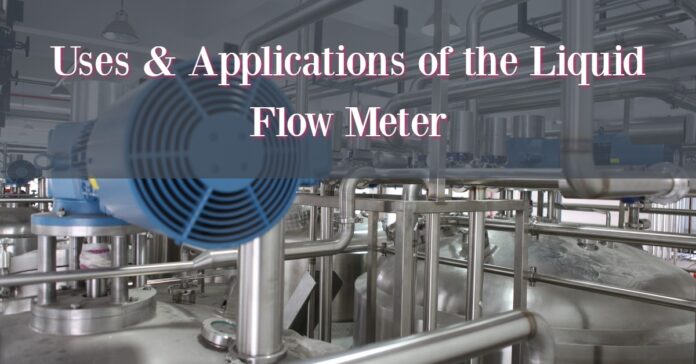Various types of liquid flow meters measure the liquid’s velocity. But you have to know the kind of liquid and application intended for the device before purchasing. The installation will also play a vital role in the type of flow meter chosen.
Types of Liquid Flow Meters and Their Applications
As a rule, the technology of a liquid flow meter usually determines its ability to measure other media such as gas, suspended solids, steam, and slurries. These meters can measure temperature and density and highly depend on the construction and liner materials.
Five of the liquid flow meters include:
Differential Pressure-DP meters determine the liquid flow, and they use this principle; as the pressure drops across the flow meter, it goes proportional to the number of the flow rate. So, you’ll have to measure the pressure differential and take the square root to determine the flow rate.
Differential meters come in two categories; Primary and Secondary. The primary part will cause a change in energy movement and add this to the DP within the pipe.
After calculating the pressure differential, the second part gives the signal and converts this to the flow value. These meters include:
- flow nozzles
- target meters
- variable area meters, etc.
Mass Flow Meters-these provides higher accuracy in the mass flow measurement of chemical reactions or heat transfer. They are standard devices and work best in power industries, wastewater, and pharmaceuticals. Examples of these include thermal and Coriolis meters.
Velocity– In this meter, you determine the flow by measuring the speed at several flow points. These include ultrasonic, turbine, swirl, vortex shedding, electromagnetic, ultrasonic, etc. And you can integrate this over the entire flow area.
Turbine meters can detect leaks in petroleum pipelines and meter chemicals, water, and the fuel used in oil processing.
Positive Displacement– Fluid flow in this meter gets measured by fitted rotors. The rotor’s rotation is proportional to the volume of the displaced liquid.
An electronic pulse transmitter calculates the number of spins and converts this info into flow rate and volume.
Heating oils, lubrication, and printing ink are some of the liquid measurements done by PD meters. These devices include reciprocating piston, rotary vane, oval gear, and nutating disk.
Open Channel Flow Meters-You can use depth-related methods to track the open channel flows. And you get the calculation of the instantaneous flow rate by measuring the water depth. Open channel flow meters are two; flume and weir. These devices include tunnels, canals, non-pressurized sewers, rivers, and streams.
Characteristics of a Fluid and Its Flow
Flow meters can measure five things:
- Pressure
- Temperature
- Density
- Viscosity
- Vapor pressure
Ranges of Pressure
As part of Newton‘s Second Law of Motion, mass needs force to move. So in fluid, it uses force pressure confined in the pipe to move the liquid. And the density of the liquid will determine the necessary pressure and indicate the flow rate. Then it uses the data during the flow measurement of density and pressure to calculate the flow rate.
The Design
The materials used in flow meters are brass, stainless-steel plates, aluminum, PVDF, PVC, and nylon. Their design will depend on various things such as pressure, temperature, the viscosity of the measured substance, cleanliness of the flow, and pipe size. But they are customizable to measure any form of flow.
Range of Temperature
A temperature sensor gives the measurements of the gas or liquid’s temperature. The measurement of temperature is also known as thermal flow measurement. It measures the heat transfer when the gas flows past a surface. Meanwhile, the heated flow sensor calculates the amount of heat transfer of the flow of the material.
In Conclusion
Most liquid flow meters play a significant role in industrial applications. However, knowing the correct fluid and application is essential. One of the main functions of these meters is to monitor some safety conditions and the presence of transmission qualities. And for the meters to supply accurate and reliable data, the installation must be appropriate. Ensure to know the area and direction of installing them.

